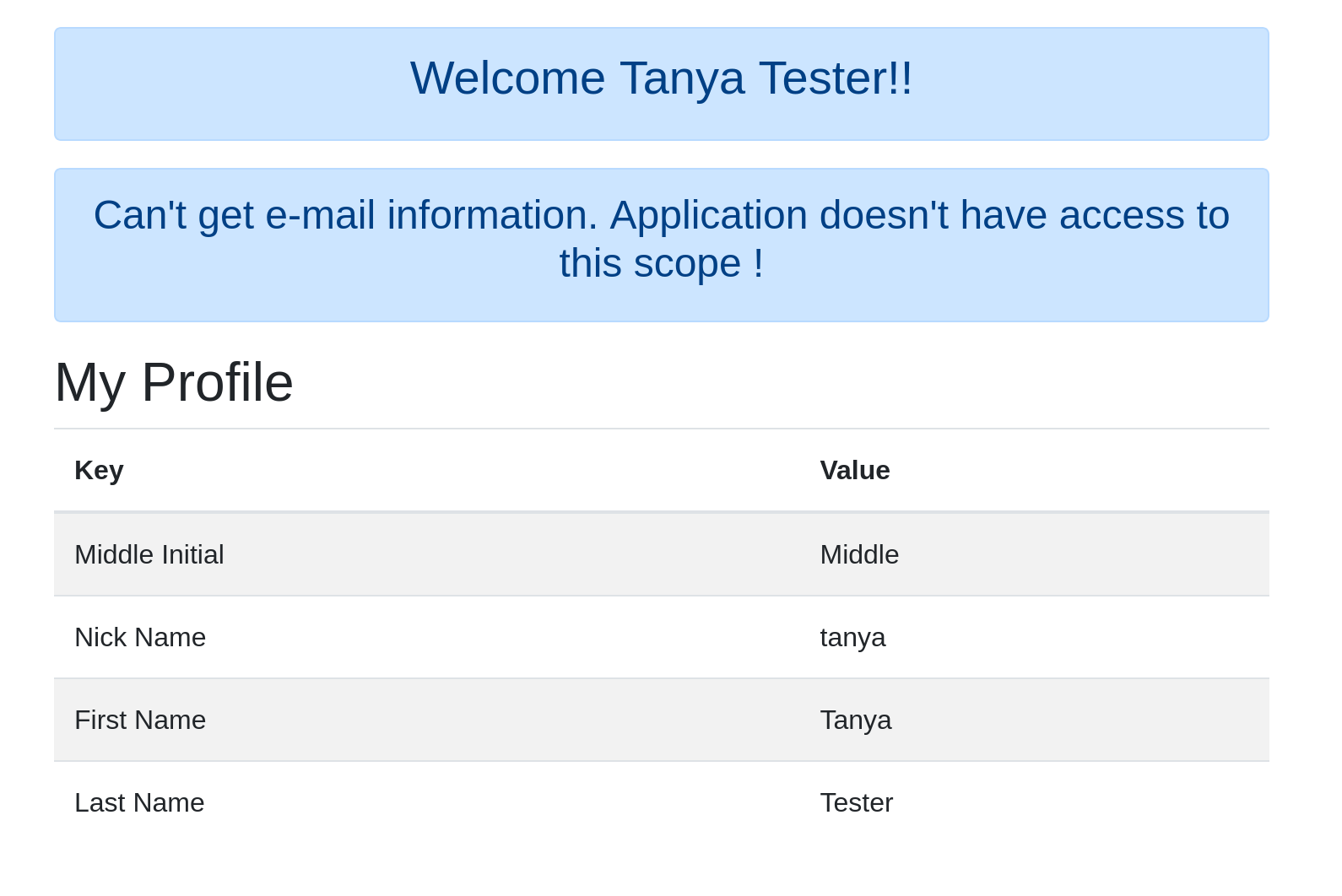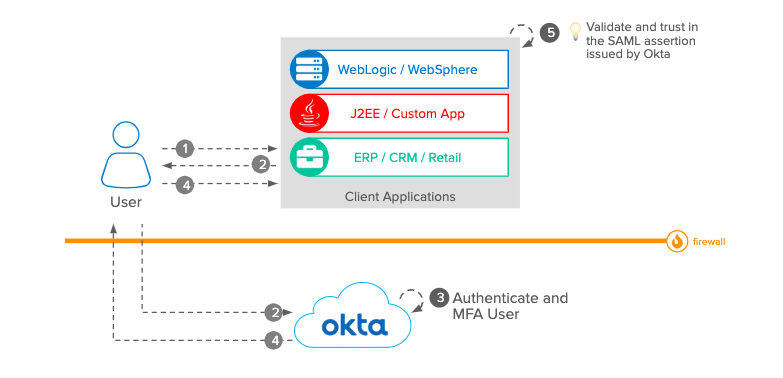Articles tagged sso
Introducing the Okta MCP Server

As AI agents and AI threats proliferate at an unprecedented rate, it becomes imperative to enable them to communicate safely with the backend systems that matter the most. A Model Context Protocol (MCP) server acts as the bridge between an LLM and an external system. It translates natural language intent into structured API calls, enabling agents to perform tasks like provisioning users, managing groups, or pulling reports, all while respecting the system’s security model. Establishing...
Build Secure Agent-to-App Connections with Cross App Access (XAA)

Secure access with enterprise IT oversight between independent applications that communicate with each other is a recognized gap in OAuth 2.0. Enterprises can’t effectively regulate cross-app communication, as OAuth 2.0 consent screens rely on users granting access to their individual accounts. Now, with the advent of AI agents that communicate across systems, the need to solve the gap is even greater – especially given the growing importance of enterprise AI security in protecting sensitive data...
Integrate Your Enterprise AI Tools with Cross-App Access

SaaS apps not only have to meet the rigorous demands of managing users at an enterprise level but must also be secure and resilient by design. In “An Open Letter to Third-party Suppliers”, Patrick Opet, Chief Information Security Officer of JPMorgan Chase, writes: “Modern integration patterns, however, dismantle these essential boundaries, relying heavily on modern identity protocols (e.g., OAuth) to create direct, often unchecked interactions between third-party services and firms’ sensitive internal resources.” Modern identity...
A History of the Mobile SSO (Single Sign-On) Experience in iOS
On an iPhone, when we log in to an app, we click a login button, and a website pops up to verify our credentials. Once verified, the website then redirects back to the app, and you are logged in. This familiar Single Sign-On (SSO) pattern is frequently referred to as the redirect flow for authentication. The use of a web browser for auth in this example is considered a “Best Current Practice” for security and...
Native SSO: Desktop and Mobile Apps Single Sign-On

When you hear SSO (Single Sign-On), you probably immediately think of web apps, and how you only need to sign into one web app first, then all other web apps give you seamless access. Unfortunately, for desktop and mobile applications (often referred to as “native apps”), the seamless web SSO experience (also referred to as native SSO) has not caught on. This is partly due to the lack of an industry standard or best practice...
How to Authenticate with SAML in ASP.NET Core and C#

Security Assertion Markup Language, more commonly known as SAML, is an open standard for exchanging authentication and authorization data between parties. Most commonly these parties are an Identity Provider and a Service Provider. The primary use case for SAML has typically been to provide single sign-on (SSO) for users to applications within an enterprise/workforce environment. Up until the past few years, SAML was considered the industry standard—and proven workhorse—for passing an authenticated user into applications...
Continuous Integration with Jenkins and Java

Continuous Integration (CI) is a popular development practice that helps to ensure software is high-quality and deployable, as you validate (compile and test) the software as soon as you check in changes to the Source Control Management System (SCM). You must have some key elements in place to adopt CI: A SCM system like Git, and a shared repository A CI server like Jenkins Automated tests Teamwork CI practices that allow you to keep build...
Build Single Sign-on in Java

In modern app development, you quite frequently have a single resource server that provides data to multiple client applications. These applications may share a similar set of users, but need to enforce different permissions. For example, it’s possible that not all users of the first application should be allowed to access the second (think of, for example, an admin console application versus a client or user application). How would you implement this? One way to...
SAML: What's Behind SSO

Apple’s recent announcement of a single sign-on (SSO) solution, Sign in with Apple, has developers everywhere thinking about how to incorporate it into their application’s infrastructure. Apple is hardly the first organization to introduce SSO—it’s a security-focused methodology that has been available for years—and one of the protocols behind it is SAML. The SAML protocol lets users prove their identities across multiple applications with just one set of login credentials. It was ratified in 2002...
Build Single Sign-on for Your ASP.NET MVC App

So you’re interested in using single sign-on (SSO) for your ASP.NET MVC apps? You’ve come to the right place. There are lots of reasons for using SSO for custom apps owned by the same organization. Better user experience. Less development time. Improved security. Those are all great reasons. Another thing I love about SSO is that it can enable upgrading a large codebase a piece at a time instead of all at once. How so?...
Easy Single Sign-On with Spring Boot and OAuth 2.0

Single sign-on used to be the “Holy Grail” of enterprise size companies and was usually only available companies that could afford it. Nowadays, we take SSO as a matter of course. For instance, you would think it was completely weird (and unpleasant) if you logged into GMail and then had to log in again when you went to Google Docs. But, what about building custom applications for developers? SSO was still in the domain of...
Use nginx to Add Authentication to Any Application

Ever found yourself wanting to put an application behind a login form, but dreading writing all that code to deal with OAuth 2.0 or passwords? In this tutorial, I’ll show you how to use the nginx auth_request module to protect any application running behind your nginx server with OAuth 2.0, without writing any code! Vouch, a microservice written in Go, handles the OAuth dance to any number of different auth providers so you don’t have...
Add Single Sign-on to Your Dropwizard Server in 15 Minutes
Dropwizard is recognized as the pioneer in turn-key Java API frameworks, and rivals Spring Boot for ease of adoption. Whether you’re interested in trying it out for the first time, or already have a mature platform built on top of Dropwizard, you can add secure authentication to your site in a matter of minutes. By combining Dropwizard’s production-ready essential libraries and Okta’s identity platform, you can construct a fully secured internet-facing web service with little...
Add Single Sign-On to Your Vert.x Server with Okta
Vert.x has continued to gain traction as a contender to the Spring ecosystem, largely due to improved performance and its polyglot accessibility. Fortunately, securing a Vert.x server with industry-leading authentication and authorization is almost as quick and easy as it is in Spring! In just a few minutes, you can have secure single sign-on guarding your server and giving you access to a wealth of information about your users. This tutorial will walk you through...
Add Single Sign-On to Your Spring Boot Web App in 15 Minutes
Need a secure web server right now? With Spring Boot and Okta, you can spin up an enterprise-quality REST server with complete user identity and authorization management in less than 20 minutes. Out of the box, Spring Boot and its Starter packages supply a near instant production-ready Tomcat server, and Okta hardens your APIs with a variety of OAuth flows just as fast. This tutorial will walk you through the complete process. The cherry on...